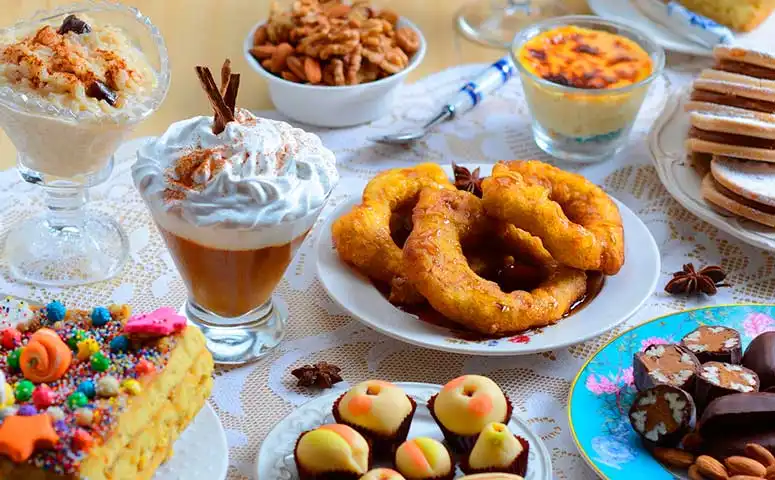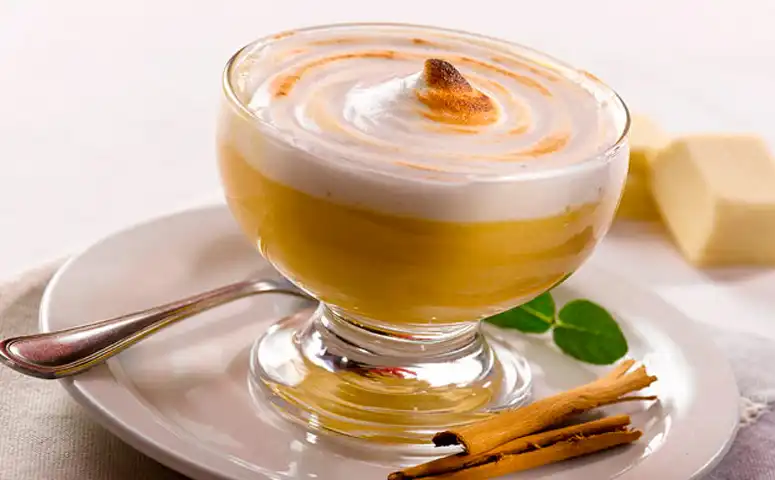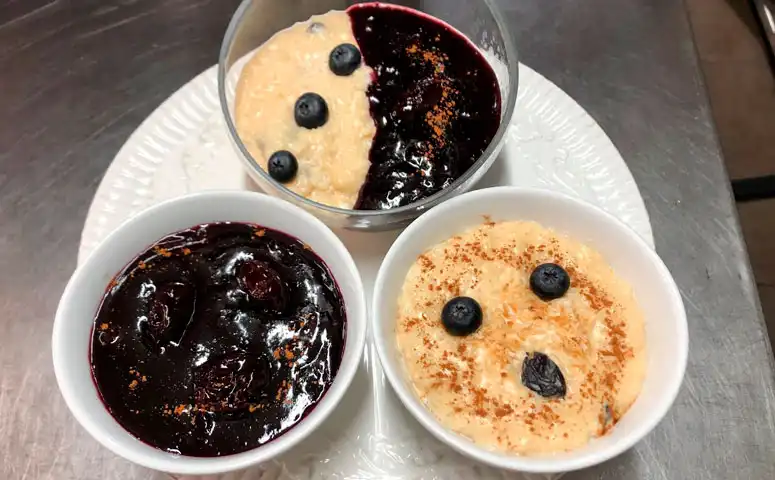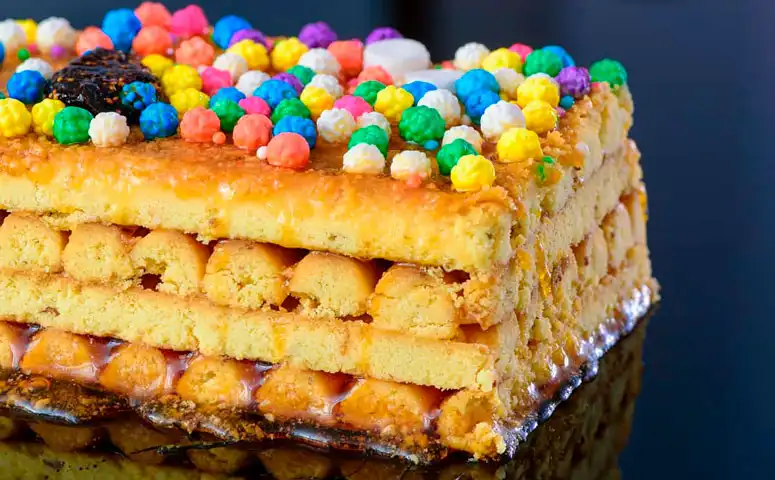
Contents
Description
Peruvian cuisine is known worldwide for its variety and flavor. Signature dishes like Ceviche, Lomo Saltado, and Causa Rellena shine on their own, but no lunch or dinner is complete without the sweet touch of a dessert. These desserts carry a rich history dating back to pre-Hispanic and colonial times.
Join us on this flavorful journey through the gastronomic tradition offered by Peruvian cuisine. We will immerse ourselves in the cultural and regional diversity that has given rise to the 10 most popular classic desserts in Peru.
History

The history of Peruvian desserts dates back to the conquest era following the arrival of the Spanish in Peru. The Spanish culinary influence blended with the indigenous, leading to the evolution of various desserts. The Spanish introduced products such as sugar, wheat, and cattle, while the ancient Peruvians contributed native products like lúcuma, chirimoya, maracuyá, aguaymanto, chocolate, etc. The fusion of these ingredients gave rise to Peruvian pastry.
Convents played a crucial role in creating desserts such as Suspiro a la Limeña, Alfajores, and Mazamorra. The combination of European customs with Peruvian ingredients has resulted in the rich tradition of desserts in Peru.
Below, we mention the 10 most popular desserts in Peru.
1. Suspiro a la Limeña

“Suspiro a la Limeña” is a captivating delight with its layers of sweetness and smooth texture, making it a Peruvian dessert that has become one of the country’s most representative. The original recipe for Suspiro Limeño was created by the Peruvian writer José Gálvez Barrenechea in the 1920s.
According to legend, the Peruvian writer created Suspiro Limeño in honor of his wife, Amparo Ayarez, who was an experienced pastry chef. The name “Suspiro” refers to the expression of love and desire that the writer conveyed upon tasting his wife’s creation, although its name and some ingredients have varied over time.
Ingredients:
- Evaporated milk
- Condensed milk
- Eggs
- Port wine
- Cinnamon powder
- Vanilla
Preparation: Mix the ingredients in a container and cook over low heat until cooked, then serve in glasses, placing the cream first, then the meringue and sprinkling at the end with a little cinnamon powder.
2. Peruvian Alfajores

The Peruvian Alfajor is a traditional dessert that has become a symbol of Peruvian gastronomy. The recipe for Peruvian Alfajores includes two cornstarch cookies, a filling of manjar blanco (a type of caramel-like milk spread), and a layer of sweet caramelized milk.
The history of Peruvian Alfajores dates back to the colonization era when the Spanish introduced ingredients like sugarcane and wheat to Peru. These Alfajores originated in Muslim Spain and have adapted to Peruvian customs and ingredients.
Ingredients:
- cornstarch flour
- Sugar
- Butter
- Blancmange
- Sweet milk candy
- Egg
- Milk
- Sugar
- Blancmange
- Sweet milk candy
3. Purple Mazamorra with Rice Pudding

Discover the magical combination of “mazamorra morada” and “arroz con leche.” The origin of “mazamorra morada” dates back to the pre-Columbian era when it was known as “moro sara” or “kulli sara” in the Quechua language. On the other hand, “arroz con leche” is a dessert that originated in Asia and was brought to Spain during the Muslim occupation. With the arrival of the Spanish, “arroz con leche” spread to Peru.
Ingredients of the purple mazamorra:
- Purple corn
- Fruit
- A touch of cinnamon
Rice pudding ingredients:
- Rice
- Milk
- Sugar
- Orange peel
It is a classic Peruvian dessert that combines two traditional delights in one dish. This combination creates a synergy between the sweet flavor of “mazamorra morada” and the creaminess of “arroz con leche,” making it a very popular dessert in Peru.
4. Turrón de Doña Pepa

It is a traditional Peruvian dessert associated with the celebration of the Lord of Miracles. Its origin dates back to the 18th century and is linked to the black slave Josefa Marmanillo, who was recognized by oral tradition as the creator of this delicacy. It is a very popular dessert in Peru and is consumed especially during the celebration of the Lord of Miracles in the month of October.
Ingredients:
- Flour
- Vegetable shortening
- Sugar
- Anise
- Chancaca (panela)
- Fruits such as quince, pineapple, banana, lemon, orange, apple
- Spices such as cinnamon, cloves
- Other ingredients such as chuño, sesame seeds, vanilla essence, water, among others.
5. Picarones

Picarones are a tempting, fried, and fluffy treat that captivates everyone who tries them. Picarones have their origins in the pre-Hispanic era when the Incas prepared a similar recipe using sweet potatoes and squash. During the colonial period, the Spaniards introduced the recipe for “Buñuelos” (sweet bread), which later merged with the Inca preparation, resulting in the Picarones as they are known today.
Ingredients:
- Pumpkin or squash
- Sweet potato or sweet potato
- Flour
- Yeast
- Sugar
- Anise
- Clove
- Cinnamon
- Salt
- Oil for frying
These ingredients are used to prepare the dough for picarones, which is then fried and served with a flavored syrup. The syrup typically includes ingredients such as “chancaca” or “panela” (unrefined whole cane sugar), sugar, orange, lemon, and spices like cloves and cinnamon.
6. Rice Zambito

It is a culinary gem and a typical Peruvian dessert that originated during the colonial period when the Spaniards introduced Rice Pudding to Peru. The original Rice Pudding recipe was adapted by the Peruvians who incorporated “Chancaca” a natural brown sweetener, and added nuts like pecans and raisins. This modification gave the dessert its characteristic color and flavor, leading to the name “Zambito” due to its dark hue.
Ingredients:
- long grain rice
- Water
- Milk
- Cinnamon
- Condensed milk
- Chancaca
7. Crema Volteada

It’s a classic that has won hearts all over Peru. The history of “crema volteada” dates back to the Roman era when Greeks and Romans made egg-based desserts. This recipe made its way to Peru during the colonial period and was quickly adapted by the locals. However, they added local ingredients like vanilla to it.
Ingredients of the Crema Volteada:
- Eggs
- Milk
- Sugar
- Vanilla
- Candy
- Evaporated milk
- Condensed milk
- Eggs
- Sugar
- Vanilla
- Candy
8. King Kong of Piura

The King Kong is an icon of the gastronomy of northern Peru, specifically the Lambayeque region, and its name refers to the large size, alluding to the gorilla from the movie King Kong.
It is a very representative and cherished sweet in Peruvian culture, with its history dating back to the 1920s. The original recipe was created by Victoria Mejía de García. Since then, this dessert has become very popular and appreciated in Peru, and its preparation is an important part of culinary tradition.
Ingredients:
- Pastry flour
- Evaporated milk
- Butter
- Eggs
- Blancmange
- Pineapple candy
- Peanut candy
9. Frozen cheese

It is a traditional dessert from Arequipa that resembles ice cream but does not contain any cheese in its ingredients. Its origin dates back to the colonial era, and it is believed to have been first made within the Convent of Santa Catalina in the city of Arequipa. Although its name may cause confusion, its taste is sweet and refreshing.
Ingredients:
- Evaporated milk
- fresh milk
- Toasted grated coconut
- Cloves
- yolks
- Milk cream
- Condensed milk
- Vanilla
- Fishtail (optional)
- Ground cinnamon to sprinkle
10. Lucuma Ice Cream

The lucuma ice cream is a popular dessert in Peruvian gastronomy, especially in the Arequipa region. Lucuma is native to the Peruvian Andes and has a taste very similar to sweet potato or peanut butter.
Ingredients:
- Condensed milk
- Milk cream
- Fresh or frozen lucuma pulp
Free Walking Tours Peru
Secure your spot on our free tours led by professional, authorized, and expert guides in Free tour Cusco, Free tour Lima, and Free tour Arequipa. Booking is free!






